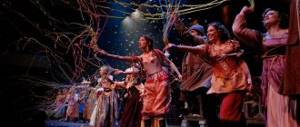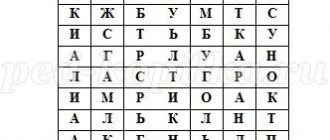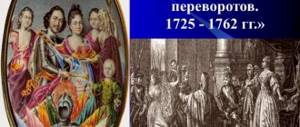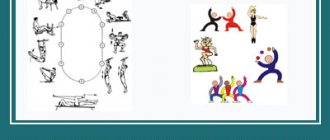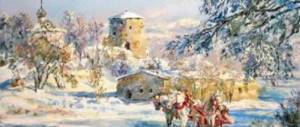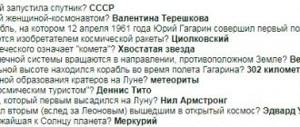What is art
Let us repeat, there are several definitions of the concept “art”. First of all, this is a high level of skill of a person in any field of activity. To explain in more detail, it can be called the ability to creatively reproduce reality with the help of aesthetic artistic images, objects, and actions. The main types of art are the spiritual culture of society.
The subject of art is the totality of relations between the world and man. The form of existence is a work of art, the means of manifestation of which can be word, sound, color, volume. The main goal of art is the self-expression of the creator through his work, which is created to evoke emotions, experiences, and aesthetic pleasure in the beholder.
Various types of art, the classification table of which shows their division into types, use imagination and illusoryness instead of strict unambiguous concepts. In a person’s life, it acts as a means of communication, enrichment with knowledge, education of values, and also a source of aesthetic joys.
Art presentations
Create your teacher website PC and PPC courses Video lessons Olympiad Webinars for teachers
- home
- Art
- Presentations
Watch and download free lessons, tests, notes, presentations and other useful materials on art for teachers and students. In this section you can get presentations on art .
- All 417
- Lessons 108
- Presentations 117
- Tests 10
- Planning 26
- Events 45
- Other 111
- All classes
- For preschoolers
- 1 class
- 2nd grade
- 3rd grade
- 4th grade
- 5th grade
- 6th grade
- 7th grade
- 8th grade
- 9th grade
- Grade 10
- Grade 11
Monumental art Lesson-introduction to the concept of “Monumental art” for children with hearing loss... 05/14/2020 Konovalova Sofia Aleksandrovna 84 0 |
| Nature of the village of Chumaevo photographs of the countryside of the village of Chumaevo... 09.22.2020 Soglasova Svetlana Mikhailovna 19 0 |
| “The Art of the Bolshoi Theater” The development contains an electronic presentation and description of slides about the history of the emergence and development of the Bolshoi Theater, its masters... 09.22.2020 Lyadova Lyudmila Aleksandrovna 18 0 |
| Presentation on the history of fine arts “Sculpture” Presentation on the history of fine arts on the topic Sculpture. This presentation is for the 1st grade of FGT DSHI…. 08/26/2020 Garamzina Alexandra Fedorovna 34 0 |
| “Tell me how you live, and I’ll tell you what kind of house you have.” Presentation on the topic “Tell me how you live, and... 05/23/2020 Malyavko Nina Valentinovna 90 0 |
| The life and work of Alexander Nikoleyev With the help of this presentation we help students study the life and work of great artists... 05/08/2020 Turgunova Muqaddas Muminovna 94 0 |
| Animals from a fairy tale. Modeling of animals. The presentation offers step-by-step sculpting of animals…. 08/17/2020 Beloglazova Irina Vasilievna 36 0 |
| Presentation on the history of fine arts “Moscow Kremlin” Presentation on the history of fine arts on the topic Moscow Kremlin. This presentation is for the 1st grade of FGT DSHI…. 08/26/2020 Garamzina Alexandra Fedorovna 66 0 |
| Kazak sungyla sonshy oneri Kazak halkynyn adamtanu ilimiminin sonshyldyk onerine kіrіspe әңгімліні… 06/26/2020 Kavdirazakh Kobdabai 163 0 |
| Electronic presentation “Savrasov A.K.” In the presentation "Savrasov A.K." the artist's work is presented. A brief biographical information and analysis of the artist’s paintings are given. And also, the main paintings of the painter... 05/20/2020 Efremova Galina Aleksandrovna 109 1 |
Art glass The presentation provides a brief description of the history of the emergence and development of art glass production. The slides are accompanied by photos... 04/28/2020 Kireeva E.N. Shatkova L.V. 119 1 |
| Presentation for the lesson Conversations about art for 1st grade on the topic “Acquaintance with the work of marine painters” The presentation was prepared for the lesson Conversations about art for 1st grade students of the Children’s Art School, to familiarize themselves with the concept of marina in the fine arts, as well as the work of… 04/30/2020 Krupenya Anna Valerievna 139 0 |
| Presentation for the lesson Conversations about art on the topic “The Art of Illusion” for 1st grade The presentation was prepared for 1st grade students of the Children's Art School to familiarize themselves with the concept of illusion, as well as the work of illusionists. ... 04/30/2020 Krupenya Anna Valerievna 141 0 |
| Non-traditional drawing techniques Presentation on the topic “Non-traditional drawing techniques” for preschoolers and primary schoolchildren… 05/20/2020 Kirillina Uigulaana Dmitrievna 148 1 |
| “Primitive art” Primitive or prehistoric art is the art of primitive society, created before the advent of... 03/11/2020 Kobozeva Liliya Valerievna 176 3 |
| Presentation on Fine Arts “Folk festive costume” (3rd grade) presentation on Fine Arts in 3rd grade… 02/19/2020 Rossol Olga Ivanovna 182 4 |
| “Cinema music. I. Dunaevsky. Overture to the film “The Children of Captain Grant” Development of the emotional sphere of students, ear for music, sense of rhythm, musical memory; Instill artistic taste in different types... 03/25/2020 Mazur Natalia Viktorovna 197 3 |
| Report on the topic Painting by Anatoly Andreevich Shumilkin This presentation can be used in fine arts lessons. The report is intended to familiarize children with the work of the famous Tomsk artist…. 10/31/2019 Ismailova Svetlana Sergeevna 142 2 |
| What do the coats of arms tell us about? Coat of arms of Russia What do the coats of arms tell? Coat of arms of Russia. 5th grade, fine arts... 02/12/2020 Kirsanova Nadezhda Vladislavovna 165 3 |
| Presentation “Medal art. Medals" 4th grade Fine arts Presentation on fine arts for 4th grade students "Medal art". Feats of the people in the Great Patriotic War of 1941-1945. awarded with orders and medals... 03/31/2020 Voronezhskaya Tatyana Sergeevna 405 18 |
- ← Back
- Continue →
Basic functions of art
Types of art (their table is presented below) exist in the world to perform certain social functions:
- Aesthetic. Reproduction of reality according to the laws of beauty. Influence on the formation of aesthetic taste, the ability to experience and feel emotions. The ability to distinguish between the sublime and the standard, the beautiful and the ugly.
- Social. Ideological influence on society, transformation of social reality.
- Compensatory. Solving psychological problems, restoring peace of mind and balance. Detachment from gray reality and everyday life by compensating for the lack of harmony and beauty.
- Hedonistic. The ability to bring positive emotions through the contemplation of beauty.
- Cognitive. Study and knowledge of reality through works of art, which are sources of information about public processes.
- Prognostic. The ability to predict and anticipate the future.
- Educational. Influence on the formation of personality and moral development of a person.
Classification of art forms
Art does not have a single form of embodiment. In this regard, it is classified according to different criteria into genres, genera, types, subspecies. There is no one generally accepted system, so art is divided into groups according to certain factors.
Dynamics is one of the criteria by which types of art are classified. The table in this article shows how the types of creativity are divided according to this scheme. So, according to its dynamics, art is divided into:
• temporary (dynamic);
• spatial (plastic);
• spatio-temporal (synthetic).
According to the emotions expressed and the feelings evoked, it is divided into genres: comedy, tragedy, drama, etc.
Types of art are also determined by the materials used:
• traditional – paints, clay, metal, plaster, wood, granite, canvas;
• modern – electrical engineering, computers;
• sound;
• word.
The main classification system identifies 5 main types of art, each of which additionally has several subtypes:
• applied (labor);
• visual;
• entertainment (game);
• sound;
• verbal.
For a clear example, we have provided you with a summary table that contains all the main types of art.
| Temporary | Sound | Music |
| Verbal | Literature | |
| Spatiotemporal | Spectacular | Movie |
| Stage | ||
| Choreography | ||
| Circus | ||
| A television | ||
| Theater | ||
| Applied | Arts and crafts | |
| Architecture | ||
| Spatial | Fine | Photo |
| Graphic arts | ||
| Painting | ||
| Sculpture |
Below you can read in more detail about each of them.
Art work program, 8th grade
The work program of the academic subject “Music” is compiled in accordance with the requirements of the Federal State Educational Standard for Basic General Education, the Model Program for Music (grades 5-7) for a primary school, recommended by the Ministry of Education and Science of the Russian Federation, based on the original program for music by G. P. Sergeeva, E. D. Kritskaya.
The music work program is aimed at 8th grade students. The level of study of the subject is basic. Thematic planning is designed for 1 teaching hour per week, 34 teaching weeks, which is 34 teaching hours per year. This number of hours fully corresponds to the version of the original program “Art for grades 8-9” by G. P. Sergeeva, E. D. Kritskaya, recommended by the Ministry of Education and Science of the Russian Federation
(M.: Prosveshcheniye, 2015) in accordance with the Federal State Educational Standard of the 2nd generation.
1. Planned results of mastering the academic subject
“Music”
In the system of subjects of a comprehensive school, the music course is presented in the subject area “Art”. The purpose of “Music” in primary school is to ensure the formation and development of universal learning activities (ULA): personal, meta-subject, subject.
Personal UUD:
Personal results
mastering the music program by graduates of the basic school are:
· formation of a holistic idea of the multicultural picture of the modern musical world;
· development of a musical and aesthetic sense, manifested in an emotional, valuable, interested attitude towards music in all the diversity of its styles, forms and genres;
· improving artistic taste, stable preferences in the field of aesthetically valuable works of musical art;
· mastery of artistic skills in the process of productive musical and creative activity;
· presence of a certain level of development of general musical abilities, including figurative and associative thinking, creative imagination;
· acquisition of sustainable skills in independent, purposeful and meaningful music-learning activities;
· cooperation in the implementation of collective creative projects, solving various musical and creative problems.
Metasubject UUD:
Meta-subject results
mastery of music programs by secondary school graduates characterizes the level of formation of universal educational actions, manifested in the cognitive and practical activities of students:
· the ability to independently set new educational tasks based on the development of cognitive motives and interests;
· the ability to independently plan ways to achieve goals, consciously choose the most effective ways to solve educational and cognitive problems;
· the ability to analyze one’s own learning activities, adequately assess the correctness or error of completing an educational task and one’s own capabilities for solving it, and make the necessary adjustments to achieve the planned results;
· mastery of the basics of self-control, self-esteem, decision-making and making informed choices in educational and cognitive activities;
· ability to define concepts, generalize, establish analogies, classify, independently select grounds and criteria for classification; ability to establish cause-and-effect relationships; reflect, reason and draw conclusions;
· semantic reading of texts of various styles and genres;
· the ability to create, apply and transform signs and symbols, models and diagrams to solve educational and cognitive problems;
· the ability to organize educational cooperation and joint activities with the teacher and peers: determine goals, distribute the functions and roles of participants, for example in an art project, interact and work in a group;
· formation and development of competence in the field of use of information and communication technologies; desire for independent communication with art and artistic self-education
Subject results
graduates of the basic school in music are expressed as follows:
· a general understanding of the role of musical art in the life of society and each individual;
· conscious perception of specific musical works and various events in the world of music;
· sustainable interest in music, artistic traditions of one’s people, various types of musical and creative activities;
· understanding of the intonation-figurative nature of musical art, means of artistic expression;
· understanding the main genres of musical and poetic folk art, domestic and foreign musical heritage;
· discussion about the specifics of music, the characteristics of musical language, individual works and styles of musical art in general;
· use of special terminology to classify various phenomena of musical culture;
· comprehension of the musical and cultural traditions of one’s people and different peoples of the world;
· expansion and enrichment of experience in various types of musical and creative activities, including information and communication technologies;
· mastering knowledge about music, mastering practical skills to realize one’s own creative potential.
Subject results of studying the academic subject “Music”
The student will learn:
- actively creatively perceive music of various genres, forms, styles;
-hear musical speech as an expression of a person’s feelings and thoughts, distinguish expressive and figurative intonations in it, recognize the characteristic features of the musical speech of different composers;
- navigate different genres of musical and poetic folklore of the peoples of Russia (including their native land);
-observe the process of musical development based on the similarities and differences of intonations, themes, images, and their changes; understand the cause-and-effect relationships of the development of musical images and their interaction;
-model the musical characteristics of the characters, predict the course of events in “musical history”;
- use graphic notation for orientation in a musical work in different types of musical activities;
- to embody the artistic and figurative content, intonation and melodic features of folk and professional music (in singing, words, movement, playing simple musical instruments) to express one’s attitude towards music in various types of musical and creative activities;
- plan and participate in collective activities to create dramatizations of musical and stage works, interpretations of instrumental works in plastic intonation;
The student will have the opportunity to learn:
-orientate yourself in musical notation when performing simple melodies;
creative self-realization in the process of implementing one’s own musical and performing plans in various types of musical activities;
-organize cultural leisure, independent musical and creative activities, play music and use ICT in musical creativity;
- provide assistance in organizing and conducting school cultural events, presenting the results of one’s own musical and creative activities to the general public, collecting music collections (record library, video library).
2. Contents of the academic subject
“Music”
Section 1. Art in the life of a modern person - 3 hours
Art is around us, its role in the life of modern man. Art as the guardian of culture, the spiritual experience of humanity. An appeal to the art of the past in order to identify its multifunctionality and value for people who lived at all times.
Kinds of art. Artistic image – style – language. Science and art. Scientific knowledge and artistic knowledge. The role of art in the formation of artistic and scientific thinking.
Section 2. Art opens up new facets of the world - 7 hours.
Art as a figurative model of the surrounding world, enriching a person’s life experience, his knowledge and ideas about the world. Art as the spiritual experience of generations, the experience of conveying attitudes towards the world in figurative form, knowledge of the world and oneself. Discovery of objects and phenomena of surrounding life through art. Universal human values and forms of their transmission in art. Art tells about the beauty of the Earth: landscape in painting, music, literature. Man in the mirror of art: portrait in music, literature, painting, cinema. Portraits of our great compatriots.
Section 3. Art as a universal way of communication - 7 hours.
Art as a conductor of spiritual energy. The process of artistic communication and its role in bringing together peoples, countries, eras (museums, international exhibitions, competitions, festivals, projects). Creation, perception, interpretation of artistic images of various arts as a communication process. Methods of artistic communication. Sign-symbolic nature of art. Conciseness and capacity of artistic communication. Dialogue of arts. The art of literary translation is the art of communication. An appeal from the creator of a work of art to his contemporaries and descendants.
Section 4. Beauty in art and life - 10 hours.
What is beauty? The ability of art to give people a sense of aesthetic experience. Laws of beauty. The difference in human reactions (emotions, feelings, actions) to social and natural phenomena in life and in art. The creative nature of the aesthetic attitude towards the surrounding world. The combination of two realities in a work of art - the one that actually exists and the one generated by the artist’s imagination. Beauty is understood by different social groups in different eras.
Poeticization of everyday life. Beauty and benefit.
Section 5. The beautiful awakens the good - 7 hours.
The transformative power of art. Education through art is “quiet work” (F. Schiller). Value-orientation, moral, educational functions of art. Art therapeutic effects of art. Images of created reality - poeticization, idealization, glorification, etc.
Synthesis of arts in the creation of artistic images. Correlation of feelings, thoughts, assessments of the reader, viewer, listener with the value guidelines of the author of a work of art. The ideal of man in art. Education of the soul.
Research project.
- Artistic and creative activities:
Research project: “Mighty nature is full of wonders.” Creation of an artistic concept and embodiment of the emotional and figurative content of the spring fairy tale “The Snow Maiden” through the means of various types of art (painting, music, literature, cinema, theater
3. Calendar-thematic planning of music lessons
in 8 “A”, “B”, “C”, “D”, “D” classes (1 hour per week, 34 hours in total)
| № lesson | Lesson topic | Number of hours | the date of the lesson | Correction of lesson date | |||
| Topic: Art in the life of a modern person (3 hours) | |||||||
| 1 | Art around us Artistic image-style-language. | 1 | A | ||||
| B | |||||||
| IN | |||||||
| G | |||||||
| D | |||||||
| 2 | Science and art Entrance test | 1 | A | ||||
| B | |||||||
| IN | |||||||
| G | |||||||
| D | |||||||
| 3 | Scientific knowledge and artistic knowledge. | 1 | A | ||||
| B | |||||||
| IN | |||||||
| G | |||||||
| D | |||||||
| Art opens up new facets of the world (7 hours) | |||||||
| 4 | Art talks about the beauty of the Earth. Literary pages. | 1 | A | ||||
| B | |||||||
| IN | |||||||
| G | |||||||
| D | |||||||
| 5 | Landscape - poetic and musical painting | 1 | A | ||||
| B | |||||||
| IN | |||||||
| G | |||||||
| D | |||||||
| 6 | Visible music | 1 | A | ||||
| B | |||||||
| IN | |||||||
| G | |||||||
| D | |||||||
| 7 | Man in the mirror of art: portrait genre | 1 | A | ||||
| B | |||||||
| IN | |||||||
| G | |||||||
| D | |||||||
| 8 | Portrait in Russian art Portraits of our great compatriots | 1 | A | ||||
| B | |||||||
| IN | |||||||
| G | |||||||
| D | |||||||
| 9 | Musical portrait. Alexander Nevskiy. | 1 | A | ||||
| B | |||||||
| IN | |||||||
| G | |||||||
| D | |||||||
| 10 | Portrait of the composer in literature and cinema. | 1 | A | ||||
| B | |||||||
| IN | |||||||
| G | |||||||
| D | |||||||
| Art as a universal way of communication (7 hours) | |||||||
| 11 | The world in the mirror of art. | 1 | A | ||||
| B | |||||||
| IN | |||||||
| G | |||||||
| D | |||||||
| 12 | The role of art in bringing peoples together. The art of literary translation is the art of communication. Art is a conductor of spiritual energy. | 1 | A | ||||
| B | |||||||
| IN | |||||||
| G | |||||||
| D | |||||||
| 13 | How a message is conveyed in art. Signs and symbols of art. | 1 | A | ||||
| B | |||||||
| IN | |||||||
| G | |||||||
| D | |||||||
| 14 | Test for the first half of the year (Test) | 1 | A | ||||
| B | |||||||
| IN | |||||||
| G | |||||||
| D | |||||||
| 15 | Artistic messages from ancestors. Conversation with time. | 1 | A | ||||
| B | |||||||
| IN | |||||||
| G | |||||||
| D | |||||||
| 16 | Symbols in life and art. | 1 | A | ||||
| B | |||||||
| IN | |||||||
| G | |||||||
| D | |||||||
| 17 | Sounding color and visible sound. Musical and poetic symbolism of fire. | 1 | A | ||||
| B | |||||||
| IN | |||||||
| G | |||||||
| D | |||||||
| Beauty in art and life (10 hours) | |||||||
| 18 | What is beauty? | 1 | A | ||||
| B | |||||||
| IN | |||||||
| G | |||||||
| D | |||||||
| 19 | Revelation of eternal beauty. | 1 | A | ||||
| B | |||||||
| IN | |||||||
| G | |||||||
| D | |||||||
| 20 | Revelation of eternal beauty | 1 | A | ||||
| B | |||||||
| IN | |||||||
| G | |||||||
| D | |||||||
| 21 | Frozen music. | 1 | A | ||||
| B | |||||||
| IN | |||||||
| G | |||||||
| D | |||||||
| 22 | Does beauty have its own laws? | 1 | A | ||||
| B | |||||||
| IN | |||||||
| G | |||||||
| D | |||||||
| 23 | Have people always understood beauty in the same way? | 1 | A | ||||
| B | |||||||
| IN | |||||||
| G | |||||||
| D | |||||||
| 24 | The great gift of creativity: the joy and beauty of creation. | 1 | A | ||||
| B | |||||||
| IN | |||||||
| G | |||||||
| D | |||||||
| 25 | How beauty and benefit relate. | 1 | A | ||||
| B | |||||||
| IN | |||||||
| G | |||||||
| D | |||||||
| 26 | How a person reacts to various phenomena in life and in art. | 1 | A | ||||
| B | |||||||
| IN | |||||||
| G | |||||||
| D | |||||||
| 27 | Creative project. | 1 | A | ||||
| B | |||||||
| IN | |||||||
| G | |||||||
| D | |||||||
| The beautiful awakens the good (7 hours) | |||||||
| 28 | The transformative power of art. | 1 | A | ||||
| B | |||||||
| IN | |||||||
| G | |||||||
| D | |||||||
| 29 | Research project “Mighty nature is full of wonders.” Spring fairy tale "Snow Maiden". | 1 | A | ||||
| B | |||||||
| IN | |||||||
| G | |||||||
| D | |||||||
| 30 | The origins of the image of the Snow Maiden in the pagan culture of the Slavs | 1 | A | ||||
| B | |||||||
| IN | |||||||
| G | |||||||
| D | |||||||
| 31 | Play for the theater by A.N. Ostrovsky "Snow Maiden" | 1 | A | ||||
| B | |||||||
| IN | |||||||
| G | |||||||
| D | |||||||
| 32 | Images of the fairy tale “The Snow Maiden” in fine art and music. | 1 | A | ||||
| B | |||||||
| IN | |||||||
| G | |||||||
| D | |||||||
| 33 | Final test (Test) | 1 | A | ||||
| B | |||||||
| IN | |||||||
| G | |||||||
| D | |||||||
| 34 | Generalization .Protection of research projects. | 1 | A | ||||
| B | |||||||
| IN | |||||||
| G | |||||||
| D | |||||||
Educational and methodological support of the educational process
Literature
· G.P. Sergeeva, I.E. Kashekova, E.D. Kritskaya Textbook for students of grades 8-9 of general education institutions “Art” Moscow “Enlightenment” ,
2014
· G.P. Sergeeva, I.E. Kashekova, E.D. Cretan Teacher's Manual “Art” 8-9 grades Moscow “Enlightenment 2011”
· G.P. Sergeeva, I.E. Kashekova, E.D. Cretan Reader of musical material “Art” grades 8-9 Moscow “Enlightenment2011”
- Collection of normative documents. Art", M., Bustard, 2008.
- The basic curriculum of general educational institutions of the Russian Federation, approved by order of the Ministry of Education of the Russian Federation No. 1312 dated March 9, 2004;
- The federal component of the state educational standard, approved by Order of the Ministry of Education of the Russian Federation dated March 5, 2004 No. 1089;
· Aksenov Yu. G. Color and line. / Yu. G. Aksenov, M. M. Levidova. - M., 1986.
· Bore Yu. B. Aesthetics / Yu. B. Borev. - M., 2005.
· Kashekova I.E. from antiquity to modernity / I.E. Kashekova. - M., 2000.
· Kiyashchenko N. I. Aesthetics is a philosophical science / N. I. Kiyashchenko. - M., St. Petersburg; Kyiv, 2005.
· Lotman Yu. M. About art / Yu. M. Lotman. - St. Petersburg, 1998.
· Mirimanov V.B. Art and myth: the central image of the world picture / V.B. Mirimanov. - M., 1997.
· Nazaikinsky E.V. Style and genres in music / E.V. Nazaikinsky. - M., 2003.
· Florensky P. A. Temple action as a synthesis of arts. // Selected works on art / P. A. Florensky. - M., 1996.
· Rychkova Yu. V. Encyclopedia of modernism / Yu. V. Rychkova. - M., 2002
Electronic tutorials
- Audio recordings and phonographs on music.
- Video films dedicated to the work of outstanding domestic and foreign composers.
- Video films with recordings of fragments from opera performances.
- Video films with recordings of fragments from ballet performances.
- Video films with recordings of famous orchestral groups.
- Video films with recordings of fragments from musicals.
- Musical and poetic lyrics.
- Images of musicians playing various instruments.
- Photographs and reproductions of paintings from the largest centers of world musical culture.
Internet resources
- Wikipedia. Free encyclopedia - Access mode: https://ru.wikipedia/org.wik
- Classical music - Access mode: https://classic.сhubrik.ru
- Musical Dictionary – Access mode: https://dic.academic.ru
- Multimedia program “History of Musical Instruments”
- .Unified collection - https://collection.cross-edu.ru/catalog/rubr/f544b3b7-f1f4-5b76-f453-552f31d9b164
- Russian general education portal - https://music.edu.ru/
- Children's e-books and presentations - https://viki.rdf.ru/
Applied (labor) arts
Applied arts (the table also calls them spatial) include architecture and decorative arts.
Architecture helps shape the spatial environment. With its help, the design and construction of various structures is carried out. It helps to make the buildings that people need meet their spiritual needs.
Architecture is closely related to the development of technology and technology, so with its help one can judge the scientific achievements and artistic features of different eras. Among the most famous historical styles of buildings are Baroque, Art Nouveau, Classicism, Renaissance, and Gothic. Depending on the purpose of the buildings, architecture is divided into public, industrial, residential, gardening, etc.
Decorative and applied art is a creative activity aimed at creating objects that simultaneously satisfy the artistic, aesthetic and everyday needs of people. Decorative and applied art to some extent has a national and ethnic character. Among its main types are: knitting, embroidery, lace weaving, pyrography, origami, quilling, ceramics, carpet weaving, artistic painting and processing of various materials, jewelry, etc. Products are made using various materials and technologies.
Art - lessons, tests, presentations, notes
Create your teacher website PC and PPC courses Video lessons Olympiad Webinars for teachers
- home
- Art
Watch and download free lessons, tests, notes, presentations and other useful materials on art for teachers and students.
- All 417
- Lessons 108
- Presentations 117
- Tests 10
- Planning 26
- Events 45
- Other 111
- All classes
- For preschoolers
- 1 class
- 2nd grade
- 3rd grade
- 4th grade
- 5th grade
- 6th grade
- 7th grade
- 8th grade
- 9th grade
- Grade 10
- Grade 11
| Regulations of the school competition "Entertaining Solfege - 2020" Regulations on the holding of the school competition "Entertaining Solfege - 2020" for middle school students... 03/25/2020 Mazur Natalia Viktorovna 97 0 |
| Feature cinematography during the Second World War The article talks about the reorganization of Soviet cinema during the Great Patriotic War... 08/18/2020 Fedoseev Anton Alekseevich 41 0 |
| Concert of the vocal department Concert of the vocal department, which takes place as part of the celebration of the 55th anniversary of Children's Art School No. 1. ... 03.24.2020 Mazur Natalia Viktorovna 88 0 |
| Monumental art Lesson-introduction to the concept of “Monumental art” for children with hearing loss... 05/14/2020 Konovalova Sofia Aleksandrovna 84 0 |
| Concert of the department of vocal and theoretical disciplines “Spring rehash” Concert of the vocal department as part of the celebration of the 55th anniversary of MBUDO DSHI No. 1 in Klyuchi, Ust-Kamchatka region... 03/25/2020 Mazur Natalia Viktorovna 91 0 |
| Nature of the village of Chumaevo photographs of the countryside of the village of Chumaevo... 09.22.2020 Soglasova Svetlana Mikhailovna 19 0 |
| Types of decorative and applied arts Decorative and applied art is one of the most famous areas of fine art. It has many directions that are not fully explored. And one of these directions is shamail... 09/19/2020 Gumerova Leilya Gyylfanovna 26 0 |
| “The Art of the Bolshoi Theater” The development contains an electronic presentation and description of slides about the history of the emergence and development of the Bolshoi Theater, its masters... 09.22.2020 Lyadova Lyudmila Aleksandrovna 18 0 |
| “Practical application of modern pedagogical teaching methods in the field of solfeggio” A set of knowledge and skills that reflects the students’ artistic taste, developed musical pitch ear and memory, sense of harmony, metrhythm, knowledge of musical styles, ability… 03/25/2020 Mazur Natalia Viktorovna 95 0 |
| The project-based learning method in music lessons and its role in the knowledge assessment system. Using the project method in music and art lessons. This article is about project activities in 9th grade lessons. The difficulty of assessing the quality of knowledge is often related to age… 05.29.2020 Lomakina Evgenia Aleksandrovna 63 0 |
| Concert of the department of vocal and theoretical disciplines “If only there were no winter” Winter is an amazing and most beautiful time of the year, and in Kamchatka it is special. She delights us with her snow-white beauty and the magic of winter days, and it’s not for nothing that they call her a sorceress, h... 03/25/2020 Mazur Natalia Viktorovna 88 0 |
| Presentation on the history of fine arts “Sculpture” Presentation on the history of fine arts on the topic Sculpture. This presentation is for the 1st grade of FGT DSHI…. 08/26/2020 Garamzina Alexandra Fedorovna 34 0 |
| Lesson plan “Designing a wall newspaper” The material can be used both for teaching a lesson and for extracurricular work... 09/02/2020 Nadezhda Eduardovna Komarova 38 0 |
| “Tell me how you live, and I’ll tell you what kind of house you have.” Presentation on the topic “Tell me how you live, and... 05/23/2020 Malyavko Nina Valentinovna 90 0 |
| “The role of art in the first days of the Great Patriotic War” The lesson on MHC reveals the role of music and painting in the first days of the severe test for our people, in the Great Patriotic War…. 08/23/2020 Nadezhda Viktorovna Shadayeva 31 0 |
| Outline of a lesson in jazz-modern dance To help a novice teacher-choreographer organize the educational process... 07/31/2020 Vasyukova Irina Yurievna 50 0 |
| The life and work of Alexander Nikoleyev With the help of this presentation we help students study the life and work of great artists... 05/08/2020 Turgunova Muqaddas Muminovna 94 0 |
| Animals from a fairy tale. Modeling of animals. The presentation offers step-by-step sculpting of animals…. 08/17/2020 Beloglazova Irina Vasilievna 36 0 |
| Patriotic education of children This development discusses the issues of patriotic education of children... 04/12/2020 Markeeva A.N. Rozova O.S. Stepanova E.A. 99 0 |
| The great romantic Robert Schumann The work and life of Robert Schumann. The musical horizons of the students and pianists of the Children's Art School are developing... 07/24/2020 Golenishcheva Galina Ivanovna 59 0 |
- ← Back
- Continue →
Fine Arts
Photography, sculpture, painting, graphics as a form of art that uses images, clearly show reality in tangible artistic forms.
Painting is a color representation of reality on a plane. This is one of the oldest forms of art. Depending on the theme of the painting, there are the following genres of painting: historical, battle, mythological, animalistic, still life, landscape, portrait, everyday.
Graphics as an art form is the creation of a drawing with a line on a sheet or using a cutter on a solid material, followed by an imprint on paper. This type of creativity, depending on the method of drawing, is divided into subtypes: engraving, bookplate, poster, woodcut, lithography, linocut, etching, printmaking. There are also book industrial and computer graphics.
Photography is the art of documenting a visual image, which is performed using a technical means. It has almost the same genres as painting.
Sculpture is the creation of a three-dimensional three-dimensional work of art. With the help of this art, relief and round images are created. Based on size, it is divided into easel, monumental, and decorative.
